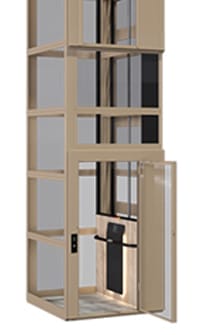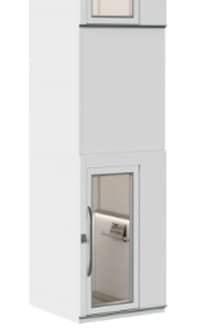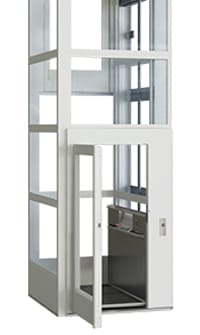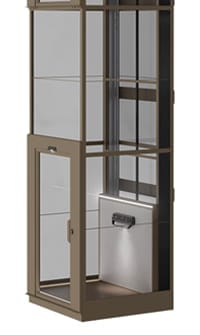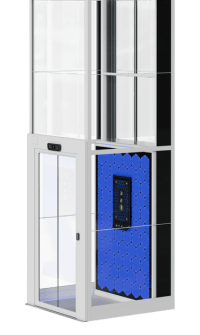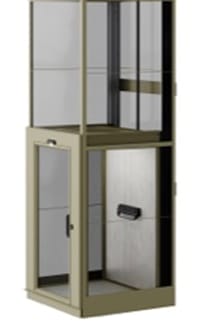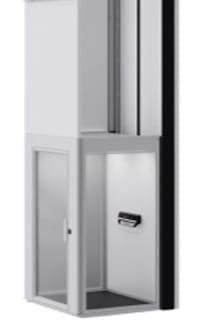The Complete Guide: Cibes Home Lifts EcoSilent
Why “EcoSilent™ 2.0” deserves attention
If you’re looking for a home lift that blends Scandinavian design, quiet operation, safety, and an installation process that isn’t a headache, Cibes and its EcoSilent™ 2.0 drive system naturally rise to the top. This article distills the essentials from the demo/how-to and maintenance videos you shared (YouTube links), then expands them into a practical guide for Thai homeowners, architects, and interior designers—so you can decide how to install it, where to place it, how to care for it, and how to communicate clearly with your installer/supplier to get the best result.
Cibes Lift Model Screw Driven EcoSilent
How to use Screw Driven Ecosilent System
Cibes Ecosilent 2.0 – How to reset your home elevator yourself How to reset your elevator
Elevator Cleaning Procedure
Elevator Power Outage Protocol
The user experience: design, space, and placement
Cibes stands out for Scandinavian aesthetics—clean lines, generous glazing, and materials that feel like they belong in a home, not a machine room. You can:
-
Choose a full-glass shaft to pull daylight deeper into the house and make spaces feel brighter and lighter.
-
Place it in the stairwell void to use “dead space” beautifully.
-
Tuck it along a wall/corner if you want to preserve your current layout.
-
Create indoor-to-outdoor connections, such as from a carport up to the living floor or from ground to rooftop—quiet operation and prefabricated shafts make outdoor siting more feasible (with proper attention to sun, rain, wind, and over-roofing).
Design tip: For warm, welcoming interiors, pair light metallics with wood floors/laminates and use wraparound glass so the lift acts like a “lantern of daylight” during the day.
Safety: understand the system and use it with confidence
The videos you shared—especially the one on how to use the EcoSilent™ 2.0 safety system—highlight practical, household-friendly behavior. A typical safety stack for home lifts like this includes:
-
Door interlocks: The lift will not move unless doors are properly closed.
-
Light curtains/door sensors: Detect obstructions in the doorway.
-
Under-platform safety edge: If something touches the edge beneath the platform, the lift stops.
-
Emergency Stop (E-Stop): Red button halts travel immediately.
-
Emergency lowering / Battery backup: For controlled descent during power cuts or when needed.
-
Alarm/Intercom: For help and alerts if something goes wrong.
How to use the “safety system,” made simple (summarized from the video)
-
Before travel: Make sure the platform floor is clear—no dropped items or tangled pet leashes.
-
While moving: Don’t lean on doors/glass and don’t put your hands in gaps.
-
If the lift stops suddenly: Check the indicator panel—sensors may have detected an obstruction. Inspect under the platform and at door edges.
-
Press E-Stop only when necessary: If pressed accidentally, follow the manual to release/reset it.
-
During a power cut: Follow the Emergency Lowering procedure to bring the platform to a safe level (where fitted).
Cleaning the “under-platform/shallow pit” area: how to do it safely (from the video)
The under-platform cleaning clip is essential viewing for homeowners. Correct routine care keeps travel smooth and extends component life:
-
Safety first
-
Know the location of the main switch (your installer will show you).
-
Follow any required lock-out steps in the manual.
-
-
Access correctly
-
Use the designated maintenance access positions.
-
Avoid prying around moving parts.
-
-
Use the right tools/cleaners
-
Microfiber + a non-abrasive multipurpose cleaner.
-
Don’t spray sensors directly—spray the cloth and wipe.
-
-
Keep sensors clean
-
Ensure the under-platform safety edge and door sensors are free of dust/debris.
-
-
Log what you did
-
Record date/time and tasks in a simple logbook so technicians can review later.
-
Even if you handle basic care, annual professional servicing is still essential: technicians verify sensors, update software where applicable, torque fasteners, and inspect wear items.
Popular installation positions (with real-world ideas)
-
Stairwell void: Turn unused space into a home feature; full-height glass makes this a daylight centerpiece.
-
Space-saving corners: Keep your existing layout while gaining vertical access.
-
Indoor–outdoor connectors: Link the carport/front porch to the living floor—great for Thai homes with level changes.
-
Townhomes/duplexes: Stack vertically across floors; pre-plan electrical supply and shaft anchorage points.
-
Second homes/rooftops: Build a rooftop lounge, considering sun, rain, wind, over-roofing, and drainage.
The must-ask checklist for installers and architects
-
Model/platform size: Will it accommodate wheelchairs/strollers? Are door clear widths sufficient?
-
EcoSilent™ 2.0 availability: Is it included on the model you want? Any additional options required?
-
Safety and standards: Confirm compliance with relevant platform-lift requirements (mechanical/electrical clearances; safety dependencies).
-
Electrical work: Phase, breaker, grounding, surge protection, and main switch location.
-
Shaft/enclosure: Steel vs. glass; condensation if outdoors; solar shading.
-
Service schedule: Preventive visits, labor/parts expectations, and what owners can safely DIY.
-
Installation timeline: Site works, installation days, testing/commissioning.
-
After-sales: Warranty, response-time SLAs, and emergency contacts.
Cost: what typically goes into the price (no specific figures here)
-
Lift unit: Platform size, travel height, and number of stops.
-
Shaft/enclosure: Full-glass/steel/mixed, overall height, exterior sealing details if outdoors.
-
Structural/architectural work: Floor/beam openings (if needed), pads/platforms, over-roofing/canopies.
-
Electrical: Main feed, dedicated breaker, optional emergency power.
-
Options: Special colors, extra doors, premium handrails/control panels, comms/alarm add-ons.
-
Installation & testing: Technical labor and commissioning tests.
-
Maintenance: Annual/multi-year service plans and periodic replacement of wear items.
Emergencies and power cuts: standard steps every household should know
-
Power cut while riding: Use the Emergency Lowering procedure (where fitted) to reach a safe floor.
-
Passenger trapped: Press the alarm/emergency button and call the provider’s emergency number. Do not pry doors.
-
After power returns: If normal operation doesn’t resume, call service before continuing use.

FAQ : How to use Cibes Home Lift Screw Driven EcoSilent System
A lift that truly “belongs” in the home
The strength of Cibes EcoSilent™ 2.0 is that it makes vertical living quiet and seamless—low noise, smooth travel, energy-savvy, and easy to care for. Combined with prefabricated shafts and compact footprints, you can install it in both new builds and renovations. Just as important, the safety stack is designed for real households of all ages, and the how-to videos make everyday use simple and confident.


